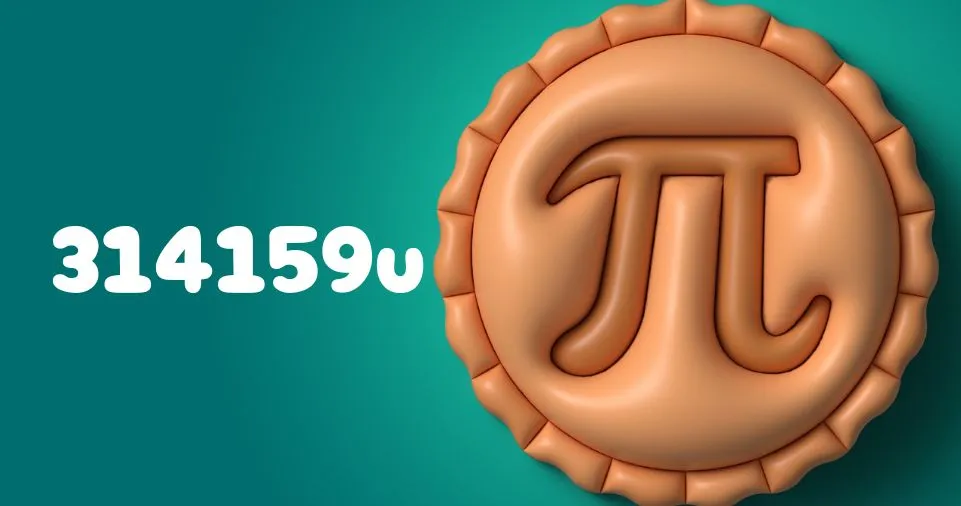
314159u: Comprehensive Insights into This Unique Identifier
In a rapidly evolving digital landscape, 314159u has become a term that sparks curiosity, especially among those entrenched in technology, cryptography, and data analysis. With its mysterious origins and growing importance in various technical applications, it becomes vital to understand what this identifier represents, where it is used, and how it impacts both technical and non-technical fields alike.
What is 314159u?
The sequence “314159” is immediately recognizable as the initial digits of Pi (π), a mathematical constant with infinite non-repeating decimal places. However, the addition of the “u” suffix turns 314159u into something more cryptographic and specific. In certain circles, 314159u is used as an identifier, particularly in blockchain technology, hashing algorithms, or even in unique key generation systems.
314159u might be linked to cryptographic sequences or advanced algorithms in data processing environments. The “u” could represent a unique, user-based identifier for specific processes. In many cases, it may also signify a utility marker, often embedded in software designed to offer mathematical precision or data encryption in secure environments.
Historical Background of 314159u
The origin of 314159u is deeply tied to mathematical theory. Pi (π) is an irrational number known since ancient times, but its use has significantly expanded beyond simple geometric calculations. Over time, its digits became a source of fascination for mathematicians and scientists alike, especially as they relate to patterns, randomness, and even security protocols.
With the advent of modern computing, unique combinations such as 314159u found their way into advanced computational methods. These applications leveraged Pi’s complexity to create near-randomized data structures. As a result, sequences derived from Pi, such as 314159u, have been adopted for cryptographic purposes, ensuring heightened security and unpredictability in sensitive systems.

314159u and Its Role in Blockchain Technology
One of the most intriguing applications of 314159u lies within blockchain and cryptocurrency ecosystems. Blockchain is a decentralized ledger that relies heavily on cryptographic principles to secure its transactions. Here, 314159u may act as an identifier, contributing to key generation or securing hashes in blockchain networks.
In a blockchain context, 314159u is used because of its strong ties to encryption. Sequences based on Pi can help ensure that hashes remain unpredictable, reducing the risk of malicious actors tampering with the blockchain. This utilization is especially prominent in proof-of-work algorithms, where cryptographic sequences play a crucial role in solving complex mathematical problems for transaction validation.
Why Use 314159u in Blockchain?
- Security and Randomness: The digits of Pi offer randomness, which is ideal for hashing algorithms in blockchain. Since 314159u is derived from Pi, it can be incorporated into systems where security and unpredictability are paramount.
- Decentralization: In decentralized systems like blockchain, where control is spread across multiple nodes, sequences like 314159u reduce the chances of centralized breaches.
- Speed of Validation: Using sequences linked to Pi can optimize the speed of transaction validation within blockchain networks by creating efficient cryptographic processes.
314159u in Cryptographic Hashing Algorithms
Cryptography plays an essential role in the protection of data, and 314159u serves as an efficient cryptographic marker. In hashing algorithms, it’s essential to create unique hashes that are impossible to predict or reverse-engineer. 314159u might serve as a seed number in creating these unpredictable hashes, particularly for secure applications.
A hash function is a process that takes an input and returns a fixed-length string of bytes, usually for data integrity checks or encryption. Because of Pi’s infinite nature, 314159u can help introduce non-repetitive digits into these hashes, increasing security. In the context of password protection, file integrity checks, and digital signatures, 314159u could be used as a key entropy source for generating secure hashes.
The Importance of 314159u in Modern Encryption
- High Entropy: Encryption algorithms thrive on randomness and high entropy, qualities inherent to sequences linked with Pi. By embedding 314159u into encryption schemes, we enhance their unpredictability and resistance to attacks.
- Complexity: The mathematical complexity of Pi makes sequences like 314159u extremely difficult to crack, which is invaluable for modern encryption.
- Scalability: Cryptographic algorithms using 314159u can scale effectively in both small and large systems due to their inherent randomness and decentralized characteristics.
314159u in Data Processing and Machine Learning
Beyond cryptography, 314159u is also useful in data processing and machine learning. When training machine learning models, randomness and complexity are vital for producing high-quality results. 314159u can be applied as a randomization tool in data sampling or as a key initialization vector in machine learning algorithms.
How Does 314159u Improve Machine Learning?
In machine learning, random initialization of parameters plays a crucial role in ensuring that models converge during training. Using sequences such as 314159u allows for the random distribution of these parameters, improving the model’s performance. The near-random properties of Pi offer excellent solutions in areas where statistical variance and data diversity are needed.
- Random Sampling: When selecting data samples for training, 314159u helps ensure unbiased sampling, which improves the generalizability of the model.
- Parameter Initialization: Randomized initialization prevents machine learning models from getting stuck in local minima, improving the optimization process.
- Noise Injection: In scenarios where noise is needed to test robustness, 314159u can be used to introduce controlled randomness into the dataset.
Future Applications of 314159u in Emerging Technologies
The influence of 314159u extends beyond current applications. With the rapid growth of quantum computing, IoT, and artificial intelligence, we foresee expanded roles for identifiers like 314159u in these fields.
- Quantum Cryptography: As quantum computers advance, classical encryption methods may become obsolete. 314159u, with its roots in Pi, offers potential in developing quantum-safe algorithms.
- IoT Security: The Internet of Things (IoT) presents new security challenges, especially with billions of connected devices. The randomization inherent in 314159u could be crucial in securing IoT networks.
- AI and Neural Networks: With the ongoing advancement in AI technologies, 314159u can be further integrated into algorithms that require high randomness, precision, and security for optimizing neural network architectures.
Conclusion: The Significance of 314159u Across Domains
As technology continues to evolve, the role of identifiers like 314159u will only expand. From securing blockchain networks to improving machine learning models and paving the way for future quantum-safe encryption, 314159u represents a bridge between mathematical theory and real-world applications. Its utility in cryptography, data science, and emerging fields makes it an invaluable asset in addressing complex computational challenges.


